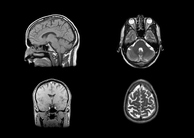The Tongue of the Learned: How the Elaboration Likelihood Model and Group Communication Can Improve Biblical LiteracyIII. Materials and MethodsThe Two Pastors In 2009 SGC experienced a drastic change in leadership as their founding pastor of 25 years died. In appointing a new pastor, SGC leadership relied on student researchers to assist them in determining how the congregation and organization would respond to the newly appointed pastor. It is important to describe the characteristics of the pastors. The founding pastor was (a) African-American, (b) non-degreed, (c) taught in the Episcopal oratory style, and (d) published a book stating that those who integrate the “philosophy of men with the Word of God…refuse to seek or receive godly counsel” (Brackens 2008:61). He goes on to state that Jesus warned of the above more frequently than he warned of the devil (60-61). Point “d” is significant as it evidences his exclusive use of the Bible and the discreditation of non-biblical sources. The current pastor (a) is African-American, (b) holds a Bachelor’s in Political Science, (c) incorporates group communication learned during his studies and (d) has published research in academic journals. The contrast of the two leaders is ideal for this study, and the results are significant. What Changed: From Episcopal to SocraticAgain, the founding pastor taught in the tradition Episcopal oratory style in which he stood before the congregation and delivered his message. Although the audience was free to publically concur or dissent, comprehension of the material was a private matter. The second pastor uses the Socratic method to teach his congregants: during the main service, he teaches a concept, asks his congregants questions regarding the message, and then has them explain how the concept can be applied in their life. The pastor adopted this approach after learning about the Elaboration Likelihood Model (ELM). The pastor engages the audience to apply the message in a meaningful way on the spot – this causes members to arrive and stay alert (i.e., central processing). Furthermore, congregants are encouraged to disagree or ask questions; this includes them in the discussion, fosters mutuality, gauges laity biblical comprehension, and increases the minister's perceived credibility. Participants The subjects reviewed are members of SGC who volunteered to participate in a pre and post-policy implementation survey, which asked them to assess their understanding of the Bible and ability to apply its concepts to their lives. Pre and Post-Policy Implementation Survey There were N=10 members who participated in the survey; to ensure consistency, we polled the same participates in the post-policy implementation survey. The pre-policy survey was administered 13 days after the change in leadership and the post-policy implementation was completed in May 2011. Organizational Health Indicator SGC leadership also sought to determine how the change in leadership/communication styles would impact organizational health. Leadership staff decided to review the attendance-to-contribution correlation as an indicator of organizational health. They hypothesized that the group communication and leadership approach would cause (a) group members to become more financial responsible to the group’s mission and (b) reduce free-riders. Analysis All analysis was completed using IBM SPSS statistical package (Version 19.0); this program was used to complete a one-tailed T-Test, Pearson Correlation, and OLS Liner Regression. Findings are expressed as T-obtained (t), mean (M), standard deviation (SD), p-value (p), Pearson correlation coefficient (PCC), r-squared (R2), and adjusted r-squared (AR2). Biblical Knowledge Application Survey Again, the group was polled to determine if they had trouble understanding and applying scripture and its context to their lives. The respondent answered either “Yes” or “No” to the questions; the variables were coded “1” if the respondent had difficulty or a “0” if they did not. A one-tailed T-Test was completed to determine if the new policy aided in the respondent’s ability to understand and apply scripture. Organization Health Indicator: Attendance-to-Contribution Correlation To determine the attendance-to-contribution correlation, members' service attendance data was merged with the their contribution data. More specifically, the data was housed in a Microsoft (MS) Access database; queries were created to sum the total number of services attended for each member per year from 2008 through 2010. A similar query was created to sum the total number of contributions5 for each member per year from 2008 through 2010. The two queries were liked via a third MS Access query, exported to MS Excel, and imported into SPSS. Because both variables are continuous, we completed a Pearson Correlation Test to determine if the total number of services attended correlated with the total number of times a member financially contributed to the church per year. Using the same dataset, an OLS linear regression was completed to determine to what extent the total number of contributions could be predicted by the total number of services attended for each member per year. This provides an indication of the degree to which free-riders were reduced. As stated previously, the results of each test were significant and therefore supports this research's hypotheses. IV. ResultsIncrease In Biblical Knowledge Again, a one-tailed T-Test was completed to determine if there was an increase in parishioners' understanding and life application of biblical concepts via the pastor's implementation of ELM and group communication ideals. Analysis of the respondents’ answers pre and post-implementation holds that the respondent was significantly more likely to feel that s/he could understand and apply scripture post implementation (M=.1579, SD=.37463) than pre-implementation (M=.6316, SD=.49559), t(18) = 4.166, p=.001). Organizational Health Indicator SGC leadership decided to review the attendance-to-contribution correlation as an indicator of organizational health, the results are compelling; see Table 1.
Using a Pearson Correlation Test, in 2009 there was marked improvement raising the PCC from .414 to .718 –strong—where p=.01. In 2010, laity education demands continued and the model sustained statistical significance using regression analysis. Reviewing AR2 from 2008 to 2010, the prediction between the total attendance and contributions rose from 0 to 94 percent. Furthermore, the PCC is .979, almost a perfect one-to-one relationship. Due to SGC’s implementation of their ELM and group communication policy, free-riders significantly decreased, and a profound increase was seen in parishioners' confidence in their ability to understand and apply biblical knowledge.Continued on Next Page » Suggested Reading from Inquiries Journal
Inquiries Journal provides undergraduate and graduate students around the world a platform for the wide dissemination of academic work over a range of core disciplines. Representing the work of students from hundreds of institutions around the globe, Inquiries Journal's large database of academic articles is completely free. Learn more | Blog | Submit Latest in Theology | |||||||||||||||||||||||||||||

















